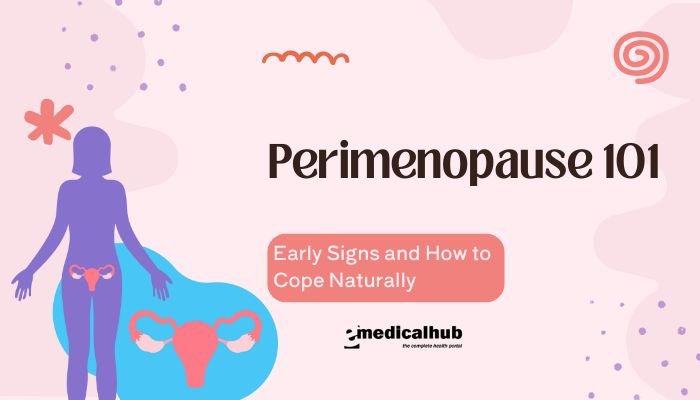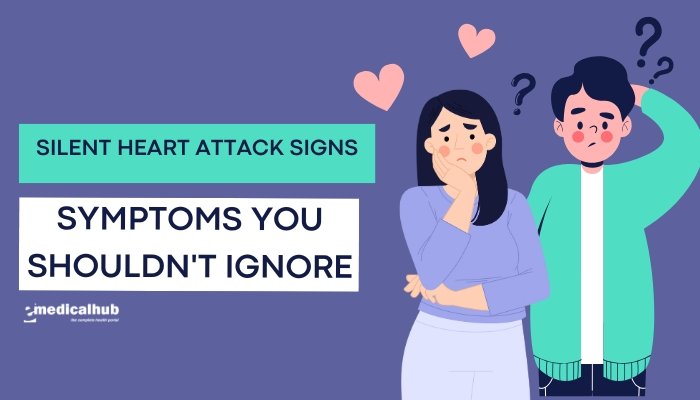Introduction
Perimenopause is the transitional period leading up to menopause. For many women, it arrives with subtle changes in menstrual patterns, mood fluctuations, and hormonal shifts that can feel puzzling or overwhelming. Unlike menopause, which is defined by the absence of menstrual periods for 12 consecutive months, perimenopause can last for several years and feature unpredictable highs and lows of estrogen and progesterone.
This phase is entirely normal and marks the beginning of the reproductive years winding down. However, understanding how to recognize its early signs can help you cope more effectively. Natural approaches—ranging from diet and exercise to stress reduction—often work well in alleviating common discomforts such as hot flashes, night sweats, and shifting emotions. By focusing on balanced living and recognizing the body’s changing hormonal landscape, you can navigate perimenopause with greater ease and confidence.
Understanding Perimenopause
Defining Perimenopause
- Transitional Phase: Perimenopause typically begins in a woman’s mid-40s, but it can start earlier. It ends once menopause is reached (that is, when 12 months have passed without a menstrual period).
- Hormonal Fluctuations: During perimenopause, the ovaries gradually produce less estrogen and progesterone, causing monthly cycles to become irregular and sometimes unpredictable.
- Individual Variation: Some may experience significant symptoms early on, whereas others might hardly notice changes until they’re closer to menopause.
Hormones in Transition
- Estrogen Declines: The body produces decreasing (and erratic) levels of estrogen. Fluctuations can cause irregular cycles and hot flashes.
- Progesterone Changes: Progesterone, which regulates the uterine lining, may also drop. In many cycles, no ovulation occurs, leading to hormonal imbalances that show up as heavy or prolonged bleeding.
- Other Hormones: FSH (Follicle-Stimulating Hormone) and LH (Luteinizing Hormone) may rise as the brain tries to stimulate the ovaries. These surges and dips can explain mood swings and night sweats.
Quote: “Perimenopause is a time of shifting hormone production—like an orchestra trying to keep in tune while some instruments play louder or softer than usual.”
Early Signs and Symptoms
Menstrual Cycle Changes
- Irregular Periods: Cycles may shorten or lengthen, and bleeding can be heavier or lighter than before.
- Skipped Cycles: As ovulation becomes sporadic, you might skip a cycle altogether.
- Prolonged Spotting: Some women report spotting for days before or after a full period.
Hot Flashes and Night Sweats
- Temperature Dysregulation: Hot flashes often begin as a sudden wave of heat radiating from the chest or face.
- Night Sweats: Nocturnal hot flashes that disrupt sleep, leaving you drenched and fatigued by morning.
- Frequency and Intensity: Can range from mild warmth a few times a week to severe flashes multiple times a day.
Mood Changes and Emotional Shifts
- Irritability: You may feel quick to anger or annoyed by minor stressors.
- Depressive Feelings: Some experience sadness or low mood, influenced by hormonal fluctuations.
- Anxiety or Tension: Worries about aging, life transitions, or changes in personal identity can amplify stress.
Sleep Disturbances
- Difficulty Falling Asleep: Racing thoughts or hormone-driven restlessness can prolong the time it takes to nod off.
- Frequent Wake-Ups: Night sweats or anxious thoughts can break your sleep cycle.
- Exhaustion: Chronic lack of rest leads to daytime fatigue and exacerbates other perimenopausal symptoms.
Vaginal Dryness and Libido Changes
- Estrogen Decline: Thinner, drier vaginal tissue can cause irritation or discomfort during intercourse.
- Lower Sex Drive: Hormonal upheavals plus stress can dampen sexual desire temporarily.
Weight and Metabolism Fluctuations
- Middle-Age Spread: Weight may gather around the midsection, partly due to slowed metabolism and hormonal changes.
- Insulin Resistance: Some women discover subtle shifts in glucose metabolism, prompting extra vigilance regarding diet.
Other Physical Symptoms
- Breast Tenderness: Sporadic hormone surges can cause soreness or swelling.
- Headaches or Migraines: Fluctuations in estrogen can trigger new or worsened headaches.
- Urinary Urgency: Shifts in tissue elasticity around the urethra can lead to mild incontinence or frequent urges.
Lifestyle Foundations: Coping Naturally
Balanced Nutrition
- Whole Foods Emphasis: Aim for vegetables, fruits, whole grains, lean proteins, and healthy fats. This helps stabilize blood sugar and may reduce hot flash triggers.
- Protein-Rich Meals: Supports muscle maintenance, particularly important as metabolism changes.
- Calcium and Vitamin D: Key for bone health, since lower estrogen can contribute to density loss. Dairy, leafy greens, or fortified foods, plus safe sun exposure or supplements.
Regular Exercise
- Aerobic Activities: Walking, running, dancing, or cycling enhance cardiovascular health and help manage weight.
- Strength Training: Resistance or weight-bearing exercises counteract bone density decline and maintain muscle mass.
- Flexibility and Balance: Yoga, tai chi, or Pilates can be gentle yet effective for stress relief and physical stability.
Stress Management
- Mindfulness Techniques: Meditation, deep breathing, or guided imagery calm the nervous system.
- Journaling: Track daily moods, triggers, or patterns in hot flashes. Identifying potential stressors helps you take control.
- Set Boundaries: Busy schedules and high expectations can fuel irritability. Healthy boundaries on work and personal commitments help preserve emotional equilibrium.
Sleep Hygiene
- Consistent Routine: Go to bed and rise at similar times, even on weekends.
- Bedroom Environment: Cool, dark, quiet spaces reduce night sweats. Use breathable sheets, consider a fan or AC.
- Limit Electronics: Blue light from screens disrupts melatonin production. Aim for device-free time before bed.
Key Tip: Lifestyle adjustments often serve as the first line of defense for mild to moderate perimenopausal discomfort. By maintaining stable routines, many women find relief from shifting hormones.
Natural Remedies and Herbal Supplements
Phytoestrogens and Plant-Derived Supplements
Soy and Red Clover
- Isoflavones: These mimic mild estrogenic activity. Some women notice reduced hot flashes.
- Evidence: Research is mixed; moderate benefits have been found for certain individuals.
- Cautions: High doses might not be suitable for those with hormone-sensitive conditions.
Flaxseed
- Lignans: Contains phytoestrogens that may gently modulate estrogen levels.
- Additional Perks: High in fiber and omega-3 fats, beneficial for heart health.
Black Cohosh
- Traditional Use: Commonly recommended for hot flashes, night sweats, and mood changes.
- Mechanism: Believed to affect serotonin receptors, though not conclusively proven.
- Safety Notes: Generally considered safe short-term, but data is inconclusive on long-term use. Rarely, concerns about liver effects arise.
Evening Primrose Oil
- Gamma-Linolenic Acid (GLA): Potentially helpful for breast tenderness and mild hot flashes.
- Evidence: Some small studies suggest benefits; side effects are typically mild (e.g., stomach upset).
Adaptogens (Ashwagandha, Maca, Rhodiola)
- Stress Resilience: Claimed to help the body adapt to physical and emotional stress, possibly easing mood swings.
- Energy and Libido: Some evidence shows ashwagandha can bolster energy or sexual function.
- Research Limitations: Human trials specifically targeting perimenopause remain limited.
Safety and Quality Considerations
- Consult Healthcare Providers: Herbs can interact with medications or underlying conditions.
- Select Reputable Brands: Third-party certification (e.g., USP, NSF) helps ensure product purity.
- Observe Changes: If you notice adverse effects or no symptom improvement after a few months, reevaluate the remedy.
Non-Hormonal Medical Options
Low-Dose Antidepressants (SSRIs or SNRIs)
- Hot Flash and Mood Relief: Paroxetine, venlafaxine, and others can ease vasomotor symptoms and stabilize mood.
- Tolerability: Generally well-tolerated though side effects may include drowsiness, reduced libido, or GI upset.
- When to Consider: For moderate to severe hot flashes or in cases where hormone therapy is contraindicated.
Gabapentin or Pregabalin
- Nerve-Modulating Drugs: Shown in studies to reduce hot flash frequency and intensity.
- Sleep Aid: Potential benefit for those experiencing night sweats, as these medications can induce drowsiness.
Clonidine
- Blood Pressure Drug: Also known to help mild hot flashes.
- Side Effects: Dizziness, dry mouth, or sedation sometimes limit use.
Emerging Therapies
- Neurokinin 3 Receptor Antagonists: Experimental solutions that target the hypothalamus to reduce vasomotor symptoms.
- Selective Estrogen Receptor Modulators (SERMs): Certain SERMs might address vaginal dryness or bone health without major breast or uterine risks.
Mood and Emotional Health Strategies
Cognitive Behavioral Therapy (CBT)
- Structured Approach: CBT teaches coping skills for anxious or negative thoughts associated with hormone fluctuations.
- Hot Flash Acceptance: Mental reframing can reduce the perceived severity or distress from flashes.
- Insomnia Protocols: CBT for insomnia helps break worry-sleep disruption cycles.
Mindfulness and Relaxation Exercises
- Meditation: Daily short sessions calm the sympathetic nervous system, possibly lowering stress hormones.
- Progressive Muscle Relaxation: Tension release technique fosters body awareness, beneficial for stress-induced muscle aches or tension headaches.
- Breathing Drills: Slow, deep breaths can avert or lessen the intensity of a hot flash.
Support Networks
- Friends and Family: Open discussions about mood swings or irritability encourage understanding and reduce isolation.
- Menopause Groups: Online forums or in-person meetups let women share experiences and coping tips.
- Professional Counseling: Helpful if mood changes are severe or if depression/anxiety persists, interfering with daily life.
Reproductive Health Concerns During Perimenopause
Fertility Awareness
- Irregular Ovulation: While fertility declines, ovulation can still occur sporadically. Pregnancy remains possible.
- Contraception: Reliable birth control is necessary until menopause is confirmed if pregnancy is not desired.
Family Planning Choices
- Egg Freezing: Some consider it if they are not yet ready for children but worry about declining egg quality.
- Hormonal Contraceptives: Low-dose pills or IUDs can help regulate bleeding and manage symptoms, doubling as contraception.
- Tubal Ligation: Women certain they do not want future pregnancies might opt for permanent solutions.
Sexuality and Intimacy
- Vaginal Dryness Solutions: OTC lubricants, vaginal moisturizers, or local estrogen therapy can restore comfort.
- Libido Fluctuations: Communication with a partner and exploring new forms of intimacy or counseling can help maintain a healthy sex life.
- Physical Therapy: Pelvic floor exercises or pelvic therapy might enhance comfort and satisfaction.
Sleep and Fatigue Management
Night Sweats and Sleep Disturbances
- Cooling Methods: Use moisture-wicking bedding, keep a fan on, or lower the thermostat.
- Nocturnal Routine: Avoid heavy meals, caffeine, or intense exercise close to bedtime.
- Natural Sleep Aids: Melatonin or mild herbal teas (e.g., chamomile, passionflower) might be beneficial.
Insomnia Solutions
- Reset the Internal Clock: Exposure to morning sunlight supports healthy circadian rhythms.
- Mind-Body Approaches: Gentle yoga or relaxation recordings can calm racing thoughts at bedtime.
- Professional Guidance: If chronic insomnia persists, sleep specialists can recommend advanced approaches (like CBT for insomnia).
Daytime Energy Boosters
- Short Naps: 20–30 minute naps can alleviate fatigue without disrupting night sleep.
- Nutrition Timing: Balanced meals or small snacks help maintain stable energy levels.
- Hydration: Dehydration can worsen fatigue and hot flashes.
Monitoring Health Markers
Bone Density and Osteoporosis Prevention
- Estrogen’s Role: Declining hormone levels accelerate bone loss.
- Calcium, Vitamin D, and K2: Adequate intake fosters bone mineralization.
- Screening: Dexa scans after 50 (or earlier with risk factors) help detect early bone density drops.
Cardiovascular Health
- Elevated Risk: Perimenopause coincides with increasing heart disease risk, partly due to lowered estrogen.
- Blood Pressure Checks: Regularly monitor BP.
- Cholesterol Levels: Maintain healthy lipid profiles through diet, exercise, or medication if needed.
Thyroid and Metabolic Panels
- Overlap of Symptoms: Hypothyroidism may mimic some perimenopause signs (fatigue, mood changes, weight gain).
- Testing: If symptoms are severe or unusual, doctors may run additional hormone panels to rule out other conditions.
Individualizing Perimenopause Care
Healthcare Team Collaboration
- Primary Care or Gynecologist: For routine checkups, possible medication management.
- Nutritionist: Guidance on macros, minerals, or potential elimination diets if certain foods trigger hot flashes.
- Mental Health Specialist: If mood swings or anxiety hamper daily functioning.
Incremental Changes Over Time
- Start Mild: Many women begin with lifestyle updates and natural supplements.
- Progress to Meds if Needed: If symptoms intensify, short-term hormone therapy or SSRIs may be introduced.
- Ongoing Reevaluation: Continue checking symptom severity and possible side effects.
Personal Preferences and Quality of Life
- Empowering Choices: Some prefer to avoid hormones altogether; others find HRT significantly boosts well-being.
- Risk-Benefit Balance: Each therapy, including natural remedies, carries potential side effects or interactions.
- No “One-Size-Fits-All”: A flexible, patient-centric approach typically yields the best results.
Overcoming Common Myths
- Myth: “Perimenopause always starts at age 50.”
Truth: It can begin in the early 40s or even late 30s. - Myth: “If your periods are regular, you are not in perimenopause.”
Truth: Ovulation can still happen irregularly; early perimenopause may feature near-normal cycles with subtle changes. - Myth: “Hormone therapy is the only option.”
Truth: Many non-hormonal strategies, from herbal approaches to stress management, can offer relief. - Myth: “Hot flashes only happen during the day.”
Truth: Night sweats (nocturnal hot flashes) are a major complaint, disrupting sleep. - Myth: “All women experience severe symptoms.”
Truth: Symptom severity varies widely; some have mild changes, while others face significant disruptions.
Staying Positive Through the Transition
Viewing Perimenopause as Growth
- Self-Discovery: Emotions that arise can prompt deeper self-reflection and lifestyle improvements.
- Midlife Reboot: A chance to reevaluate career, relationships, and personal goals with renewed perspective.
Building an Empowered Mindset
- Education: Reading reliable resources, attending workshops, or seeing specialists fosters informed decisions.
- Community: Sharing experiences with friends going through similar changes can reduce isolation.
- Mindful Acceptance: Embracing bodily changes with compassion helps defuse frustration or fear.
Celebrating Strength
- Flexibility: By combining natural remedies, lifestyle tweaks, and possibly medical aids, you tailor a personal solution.
- Progress Over Perfection: Small improvements—like fewer night sweats or calmer moods—are worth celebrating.
- Resilience: Coping with perimenopause can cultivate emotional fortitude for new life stages.
Practical Tips for Day-to-Day Coping
- Track Symptoms: A simple journal to log daily hot flashes, mood changes, or triggers.
- Plan for Hot Flashes: Wear layers, keep a portable fan, and sip cool water.
- Adjust Nutrition: Limit alcohol, excessive caffeine, or spicy foods if they worsen flushes.
- Hydrate: Adequate water intake can help regulate body temperature.
- Schedule Calm Moments: Micro-breaks or breathwork throughout the day can preempt emotional overwhelm.
- Involve Loved Ones: Explain perimenopause, so they understand mood changes or the need for temperature control in shared spaces.
When to Seek Professional Help
Severe or Unusual Symptoms
- Excessive Bleeding: Flooding or bleeding lasting longer than 7 days can signal fibroids, polyps, or other issues.
- Debilitating Hot Flashes: If daily activities suffer significantly, it might be time for more aggressive therapy.
- Depression or Anxiety: Persistent, intense mood issues need evaluation by mental health or primary care professionals.
Other Health Conditions
- Heart or Metabolic Risks: Women with high blood pressure, diabetes, or high cholesterol may need specialized perimenopause management.
- Osteopenia or Osteoporosis: Early screening recommended if risk factors exist, such as a family history.
- Thyroid Disorders: Overlapping symptoms call for thorough hormone testing.
Collaborative Approach
- Hormone Panels: Checking FSH, LH, estrogen, or progesterone levels can confirm perimenopause or rule out other concerns.
- Pelvic Ultrasound: If irregular bleeding is pronounced, imaging helps exclude uterine abnormalities.
- Second Opinions: If you feel unsatisfied or your concerns are dismissed, consult another experienced practitioner.
The Road Ahead: Menopause and Beyond
Evolving Symptoms
- Transition to Menopause: Over time, periods stop completely, hot flashes and mood swings might stabilize. Some women see improvements, while others maintain some level of symptoms in early postmenopause.
- Long-Term Health: Postmenopause can bring new challenges like bone loss and cardiovascular changes, so continuing healthy habits remains essential.
Knowledge is Power
- Staying Informed: Menopause research is ongoing, with new therapies and deeper insights emerging regularly.
- Adapting Over Time: Strategies that work now may shift as hormones continue to change. Ongoing self-awareness is crucial.
Optimism for a Vibrant Future
- Postmenopausal Liberation: Many women enjoy newfound freedom from periods, PMS, or contraception worries.
- Emotional Maturity: Midlife can be a phase of self-realization, personal growth, and establishing meaningful life directions.
Conclusion
Perimenopause ushers in hormonal fluctuations that can trigger irregular periods, hot flashes, night sweats, and emotional shifts. Recognizing these early signs—often in the early- to mid-40s—helps you anticipate changes, adopt coping strategies, and foster a smoother transition into menopause. Natural approaches, including a balanced diet, consistent exercise, stress management, and carefully chosen herbal supplements, often provide meaningful relief for moderate symptoms. For more troublesome complaints, non-hormonal medical treatments (like low-dose antidepressants) or carefully supervised hormone therapy can also bring relief.
Every woman’s experience of perimenopause is unique. Some breeze through with minimal discomfort, while others grapple with debilitating heat waves, fatigue, or emotional upheavals. Whichever category you find yourself in, an individualized approach—guided by self-awareness and supportive professionals—can yield significant improvement. By prioritizing self-care, building robust daily routines, and exploring gentle or medical solutions as needed, you can navigate perimenopause with confidence, preparing for a fulfilling postmenopausal phase that celebrates health, well-being, and personal empowerment.
References
- Harlow SD, Gass M, Hall JE, et al. Executive summary of the Stages of Reproductive Aging Workshop + 10 addressing criteria for ovarian aging. J Clin Endocrinol Metab. 2012;97(4):1159-1168.
- Freeman EW. Psychological aspects of perimenopause and menopause. J Womens Health (Larchmt). 2015;24(3):187-189.
- Burger HG, Hale GE, Robertson DM, Dennerstein L. A review of hormonal changes during the menopausal transition: focus on findings from the Melbourne Women’s Midlife Health Project. Hum Reprod Update. 2007;13(6):559-565.
- Hunter MS, Rendall M. Bio-psycho-socio-cultural perspectives on menopause. Best Pract Res Clin Obstet Gynaecol. 2007;21(2):261-274.
- Stubbs C, Mattingly L, Crawford SA, Wickersham EA, Brockhaus JL, McCarthy LH. Do menopausal symptoms explain lower self-reported sexual function in older women?. J Womens Health (Larchmt). 2018;27(1):119-125.
- Geller SE, Studee L. Botanical and dietary supplements for menopausal symptoms: what works, what does not. J Womens Health (Larchmt). 2005;14(7):634-649.
- Daley A, MacArthur C, McManus R, Stokes-Lampard H, Wilson S. Exercise for vasomotor menopausal symptoms. Cochrane Database Syst Rev. 2014;(11):CD006108.
- Hunter MS, Smith M. A randomized controlled trial of a cognitive-behavioral intervention for women who have bothersome hot flashes following breast cancer treatment (MENOS1). Menopause. 2019;26(9):1-15.
- Utian WH, Janata JW, Kingsberg SA, Schluchter M, Hamilton JC. The Utian Quality of Life (UQOL) Scale: development and validation of an instrument to quantify quality of life through and beyond menopause. Menopause. 2002;9(6):402-410.
- National Institute on Aging. Perimenopause and the Transition to Menopause.(Accessed March 2023).
- The North American Menopause Society. Management of perimenopause. Menopause. 2022;29(7):767-794.
- Reed SD, Guthrie KA, Newton KM, et al. Menopausal quality of life: improving or stalling out? J Womens Health (Larchmt). 2020;29(3):387-395.
- Carroll DG, Kelley KW. Nonhormonal therapies for hot flashes in menopause. Am Fam Physician. 2009;79(2):125-130.
- Kaunitz AM, Manson JE. Management of Menopausal Symptoms. Obstet Gynecol. 2015;126(4):859-876.





